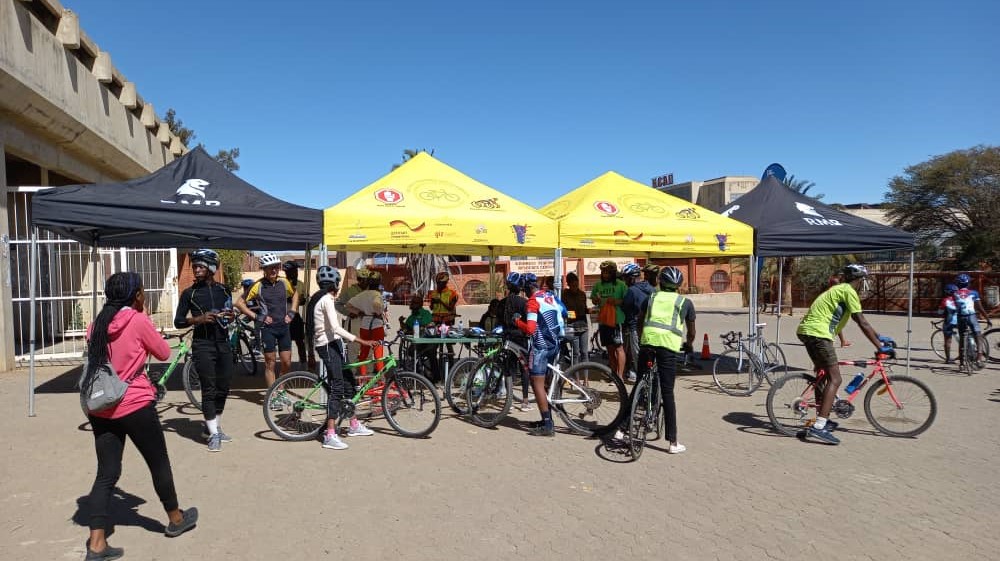
70% of people in Namibia do not own a car. However, the public transport network is limited and the majority of people rely on taxis to travel around. It is estimated that 34% of income is spent on transport.
In the past, walking and cycling have not been prioritized. “Our road system has been built around cars,” says Horst Heimstadt, CEO of Namibia Road Safety Forum. “People do walk, but they have created their own natural footpaths [dust tracks] alongside the roads.”
He identifies key barriers to walking and cycling: lack of safe infrastructure and public perception that walking and cycling is only for those who cannot afford motorized transport. The main reasons cited by people for not walking were distance and safety.
Things are changing. Windhoek now has a non-motorized transport policy and active mobility features heavily in the new national road safety strategy. Namibia Road Safety Forum has been a strong advocate for these policies, encouraging decision-makers to put the needs of people at the center of road safety decisions. “Previously, engineers only thought about roads. This is turning. Now they are thinking about people.”
“These are really good pieces of paper,” says Horst about the new non-motorized transport policy and road safety strategy, “but implementation is difficult.” Namibia Road Safety Forum would like to see dedicated paths for cyclists and pedestrians, separate from the road but funding is a problem. “The willingness is there but the funding is not,” says Horst. “The 70% of people that do not have cars also face many other challenges, such as poor housing and lack of running water. These are the issues that voters are most urgently concerned with.”
Namibia Road Safety Forum has been successful in pushing for 30 km/h limits and separation between people and vehicles in school zones, where the need to keep pedestrians safe is more directly visible, and recreational cyclists and runners now have a designated section on one of the national roads around Windhoek.
Namibia Road Safety Forum is advocating with the roads authority to create a road building policy so that new roads incorporate safety for pedestrians and cyclists, taking account of all road user needs, not just those inside cars. “Why build a road that only provides for cars?” says Horst. By doing so, the costs of making a road safe will simply be part of the design and build instead of an extra cost.
To address the cultural barriers to active mobility in Namibia, Namibia Road Safety Forum chairs a coalition that organizes monthly cycle fun days. It provides basic beginner cycle training aimed at adults who have never cycled before and arranges an awareness fun ride around Windhoek with police escort. The program is very popular and is in desperate need of bicycles to ensure its sustainability.
Read more about Namibia Road Safety Forum and see pictures from the cycle fun days HERE.